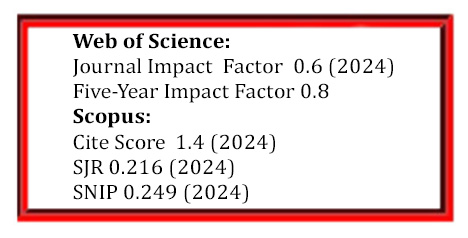Biphasic Calcium Phosphates Prepared via Heat Treatment of Powders Synthesized by Wet Precipitation Using Phosphoric Acid and Calcium Hydroxide
DOI:
https://doi.org/10.5755/j02.ms.42160Keywords:
biphasic calcium phosphates, wet precipitation, heat treatment parameters, hydroxyapatite, β-tricalcium phosphateAbstract
The aim of present paper is to investigate biphasic calcium phosphates prepared via heat treatment of precipitated powders. The precursors are prepared by wet precipitation using phosphoric acid and calcium hydroxide. The as-synthesized powders are subjected to heat treatment varying with temperature and time. The degree of crystallinity as well as qualitative and quantitative analyses of phase composition are done by XRD and FTIR. It is found that the as-synthesized powder has monophasic hydroxyapatite (HA) structure. Phase transformation runs at 700 oC calcination, resulting in formation of biphasic structure, which consists of HA and low amount of β-tricalcium phosphate (TCP): 18.3 % in 1 h and 34.3% in 4 h process. Heat treatment in the temperature range 900-1300 oC leads to formation of biphasic HA/β-TCP structure with HA as predominant phase. Clear correlation between the heat treatment parameters and the HA/β-TCP ratio is not observed. The highest β-TCP amount (39.2 %) is found at 1000 oC while at high temperatures (1100-1300 oC) it is about 30.6-32.6 %. The HA amount is 60.8 % and in the range 69.4-67.4 % respectively. The heat treatment duration does not influence strongly on the phase ratio. Increasing the duration from 1 h to 4 h leads to slight change of the HA/β-TCP ratio from 57.9/42.1 % to 49.1/50.9 % respectively. The new data on the HA/β-TCP ratio, obtained in the present study, will be used for optimization of the processes parameters in design of BCPs with definite composition, optimized resorbability and mechanical properties.
Downloads
Published
Issue
Section
License
The copyrights for articles in this journal are retained by the author(s), with first publication rights granted to the journal. By virtue of their appearance in this open-access journal, articles are free to use with proper attribution in educational and other non-commercial settings.



